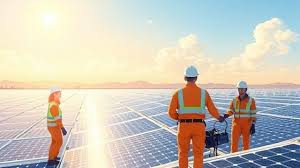Column
2023: More Polling Units, Please
The Independent National Electoral Commission (INEC) is currently conferring with stakeholders in Nigeria’s electoral space to reach a national consensus preparatory to creating more polling units in the country before the 2023 General Elections.
According to the Commission, these stakeholders include the political parties and such apex socio-cultural organisations as Afenifere, Ohaneze Ndigbo, Arewa Consultative Forum (ACF) and the Pan-Niger Delta Forum (PANDEF). Other groups are the Christian Association of Nigeria (CAN), Nigerian Supreme Council For Islamic Affairs (NSCIA) and civil society organisations.
While addressing the ACF in Kaduna recently, INEC Chairman, Prof. Mahmoud Yakubu, said that it was no longer feasible and sufficient to use the polling unit network established by the National Electoral Commission (NECON) 25 years ago for the current population of 200 million Nigerians.
“When the polling unit structure was established in 1996, it was projected to serve about 50 million registered voters. However, the number of registered voters for the 1999 general election was 57.93 million.
“This rose to 60.82 million in 2003, 61.56 million in 2007, and 73.52 million in 2011…” He said.
Yakubu further disclosed that the number of registered voters rose to 84.04 million in 2019, after dropping to 68.83 million in 2015, because the Commission embarked on a robust continuous voter registration exercise, in line with the law. He also claimed that every attempt made since 1996 to recreate the polling unit structure had failed owing to several reasons.
It could be recalled that INEC had in 2014 planned to create 30,000 extra polling units but was heavily criticised mainly on the fear that it would end up engaging in a disproportional distribution of such polling units in a manner that foists dominance of one region of Nigeria over the others for political advantage as has already become the case with states and local governments creation.
The present stakeholder engagement seems to follow INEC’s promise in September 2018 to create new polling units after the 2019 General Elections, following its receipt of 3,789 requests nationwide for the exercise back then.
The varsity don who was recently sworn in for a second tenure as the nation’s electoral umpire-in-chief, revealed that his Commission is now in receipt of a total of 5,747 requests from communities and groups across the country but would prefer to convert the existing 57,023 Voting Points and Voting Point Settlements to polling units. He claimed that this decision was less likely to attract serious criticisms from major stakeholders and the general public.
INEC’s proposal to the stakeholders is contained in its document entitled “The State Of Voter Access To Polling Units In Nigeria”. It is based on enhancing access to polling units and for which the Commission has opted to ensure three things: First, adequacy of polling units as prescribed under Section 42 of the Electoral Act of 2010 (as amended); second, location of polling units in places that are considered conducive for voters to participate freely in the electoral process and ensure that the environment at specific units remained conducive to positive voter experiences; and third, maintaining adequate safety and security of voters, especially in the context of the prevailing COVID-19 pandemic.
In other words, INEC is aiming to ease access of voters to their ballot boxes by decongesting overcrowded polling units; ensuring even distribution of voters in order to achieve 500 voters per unit; locating polling units more effectively within trekking distance of voters given that there is usually restriction of movement on Election Day; relocating polling units from private properties and other unsuitable places to public buildings and neutral grounds; and creating polling units for new settlements not serviced by the existing ones.
Much as one agrees with INEC that time is long overdue to add more polling units to the nation’s electoral process, the body must also endeavour to tread carefully. After all, it is always advised for the mouth with an aching tooth to chew with caution. Our electoral institutions had, in the past, goofed wantonly and most irreversibly. So, going forward, every one of their intentions has become suspect.
Having so warned let me also draw attention to another interesting aspect of the ongoing INEC consultation with stakeholders. The electoral body has announced its new resolve to scrap the situation of polling units in private properties, palaces, political party offices, disputed properties, government houses and such inaccessible locations as forests and shrines. Indeed, it irks me to think that this kind of aberration has been tolerated in the country for close to three decades.
My concern here is that the stakeholder groups INEC is engaging with are mostly membered by beneficiaries of this anomalous system of situating polling units. Most of our top politicians, retired military chiefs, royal fathers, religious leaders, opinion leaders and captains of industry are guilty of this. Was the strongman of Ibadan politics not rumoured to have had so many polling units in his compound while he lived? It will, therefore, be a herculean task for Yakubu and his commissioners to extract a tacit nod from these people on this particular matter.
By the way, why would INEC list government house polling units among those to be relocated? Are such places no longer regarded as public buildings? Well, except if the Commission is viewing it from the angle of easy accessibility; else one would have argued that the exercise is needless since several First Indigenes had been ousted from office even after doctoring the outcome of proceedings at such polling locations.
Lastly, like the INEC boss warned at the Kaduna confab, millions of eligible Nigerian voters may not exercise their electoral franchise in 2023 if the existing number of polling units is not expanded and restructured now.
By: Ibelema Jumbo
Column
Renewable Energy Faces Looming Workforce Crisis

Column
Why Oil Prices Could See Significant Upside Shift

Column
Nuclear Stocks Soar on Stargate AI Infrastructure Announcement
-

 Business3 days ago
Business3 days agoPETAN, Others Unveil ALCO, Get NCDMB’s Support … Mull Synergy With APPO, AU
-

 News3 days ago
News3 days agoNigeria’s Debt To W’Bank IDA Hits $19.2bn -Report
-

 Sports3 days ago
Sports3 days agoNYG:154 Nasarawa Contingent Storms Kwara For Zonal Eliminations
-

 Sports3 days ago
Sports3 days agoNigeria delegation Visits London over 2030 Commonwealth bid
-

 Sports3 days ago
Sports3 days agoD’Tigers flawless finish against Lions in AfroBasket
-

 Business3 days ago
Business3 days agoAON Lifts Ban On Freed Ibom Air Passenger
-

 News3 days ago
News3 days agoChurch Renders Free Medical Outreach, Others To Host Communities
-

 Niger Delta3 days ago
Niger Delta3 days agoSSI Moves To Empower Residents Of N’Delta Communities

